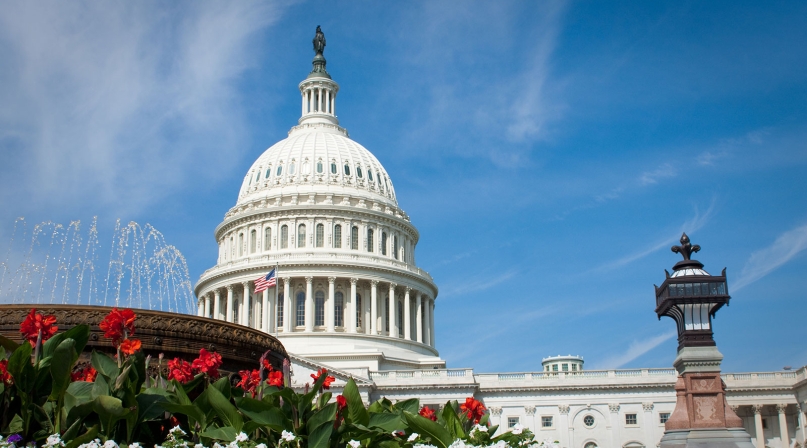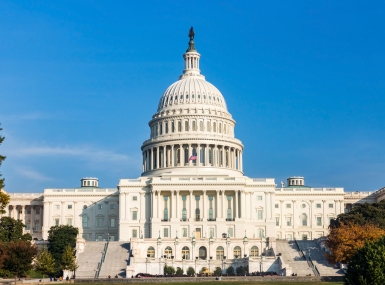U.S. House unanimously passes Water Resources Development Act of 2020
Upcoming Events
Related News

Key Takeaways
On July 29, the U.S. of House Representatives unanimously approved the Water Resources Development Act (WRDA) of 2020 (H.R. 7575). WRDA bills authorize water resources studies and projects and set policies for navigation, flood control, hydropower, recreation, water supply and emergency management for the U.S Army Corps of Engineers (Army Corps). This legislation is usually passed on a biennial basis and addresses county interests related to ports, inland waterways, levees, dams, wetlands, watersheds and coastal restoration. Counties often partner with the Army Corps to strengthen local infrastructure. The bill now heads to the House floor, where it is expected to pass. Click here for T&I’s section-by-section summary.
As major owners, users and regulators of water resources and systems with the responsibility for funding 95 percent of all local public water infrastructure needs, counties and other local governments are directly impacted by the policies and funding authorized under both pieces of legislation. Counties invest $134 billion annually in the construction of infrastructure and the maintenance and operation of public works, including public water systems and water infrastructure projects.
Highlighted below are high-level provisions included in the legislation:
- Fully unlocks the Harbor Maintenance Trust Fund (HMTF)
- Authorizes the construction of 34 new water resource projects
- Authorizes the Army Corps to study, design and construct water resources projects for communities that have been subjected to repetitive flooding events
- Directs the Army Corps to undertake an inventory of water resources development projects that are, or have the potential to be, contaminated with PFAS
- Directs the Army Corps to expedite the completion of 41 feasibility studies currently underway
- Provides technical assistance for resiliency planning
- Directs the Army Corps to complete five comprehensive river basin studies for the Great Lakes, the Upper Mississippi River, the Lower Mississippi River, the Lower Missouri River Basin and the Sacramento River
- Authorizes 35 feasibility studies for water resources development projects
- Includes further investments for the construction of inland waterways projects
- Provides flexibility for greater use of natural and nature-based infrastructure projects
Since 2014, Congress has returned to a two-year cycle for the bipartisan legislation. The last WRDA bill signed into law in 2018 received broad support by both parties.
In the Senate, WRDA legislation has been a two-part effort. On May 6, the U.S. Senate Committee on Environment and Public Works unanimously passed two bipartisan bills that, combined, would invest nearly $20 billion in water infrastructure projects and community drinking water improvements. The America’s Water Infrastructure Act of 2020 (AWIA) would authorize $17 billion in water infrastructure projects and the Drinking Water Infrastructure Act of 2020 (DWIA) would authorize $2.5 billion in safe drinking water programs. The legislation is awaiting a vote on the Senate Floor.
The prospects for passage of this legislation is good with both the House and Senate having moved WRDA bills. House Majority Leader Steny Hoyer (D-Md.) has said the water bill is a “must-pass” this year; however, it remains unclear when Senate Majority Leader Mitch McConnell (R-Ky.) will act. The two chambers will need to reach a compromise or pass an extension of current law before the WRDA 2018 (P.L. 115-270) expires on September 30, 2020. NACo will continue to work with lawmakers to ensure county priorities are included in a final bill.

Attachments
Related News

U.S. House of Representatives passes SPEED Act and other permitting reform bills
On December 18, the U.S. House of Representatives passed the SPEED Act (H.R. 4776). The SPEED Act would strengthen county involvement in decision-making and make needed commonsense reforms to the federal environmental review process.

House Natural Resources Committee advances the Endangered Species Act Amendments Act of 2025
On December 17, the House Natural Resources Committee advanced the Endangered Species Act (ESA) Amendments Act of 2025 (H.R. 1897). The version passed by the committee adopted several changes from the initial bill and would address key county concerns by improving the implementation of the ESA. The legislation now awaits a floor vote before the whole U.S. House of Representatives.

Counties and Railroads: Shared Priorities for the Next Surface Transportation Bill
County leaders from across the country have a vital opportunity to ensure their infrastructure priorities are front and center.